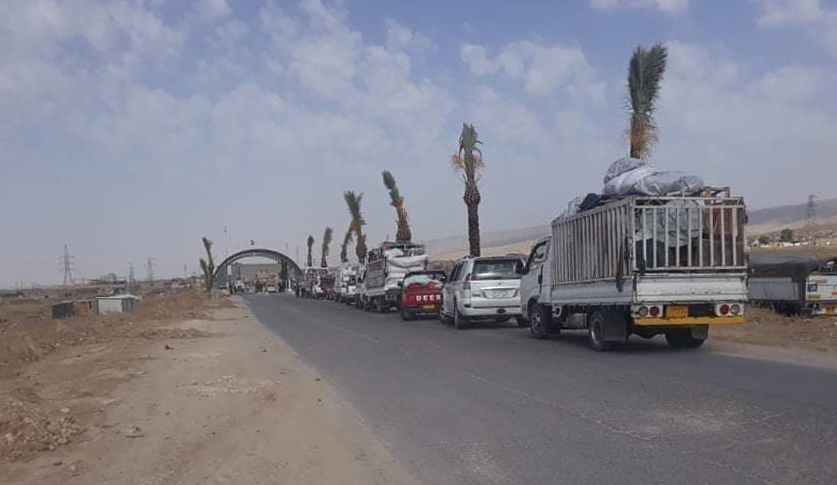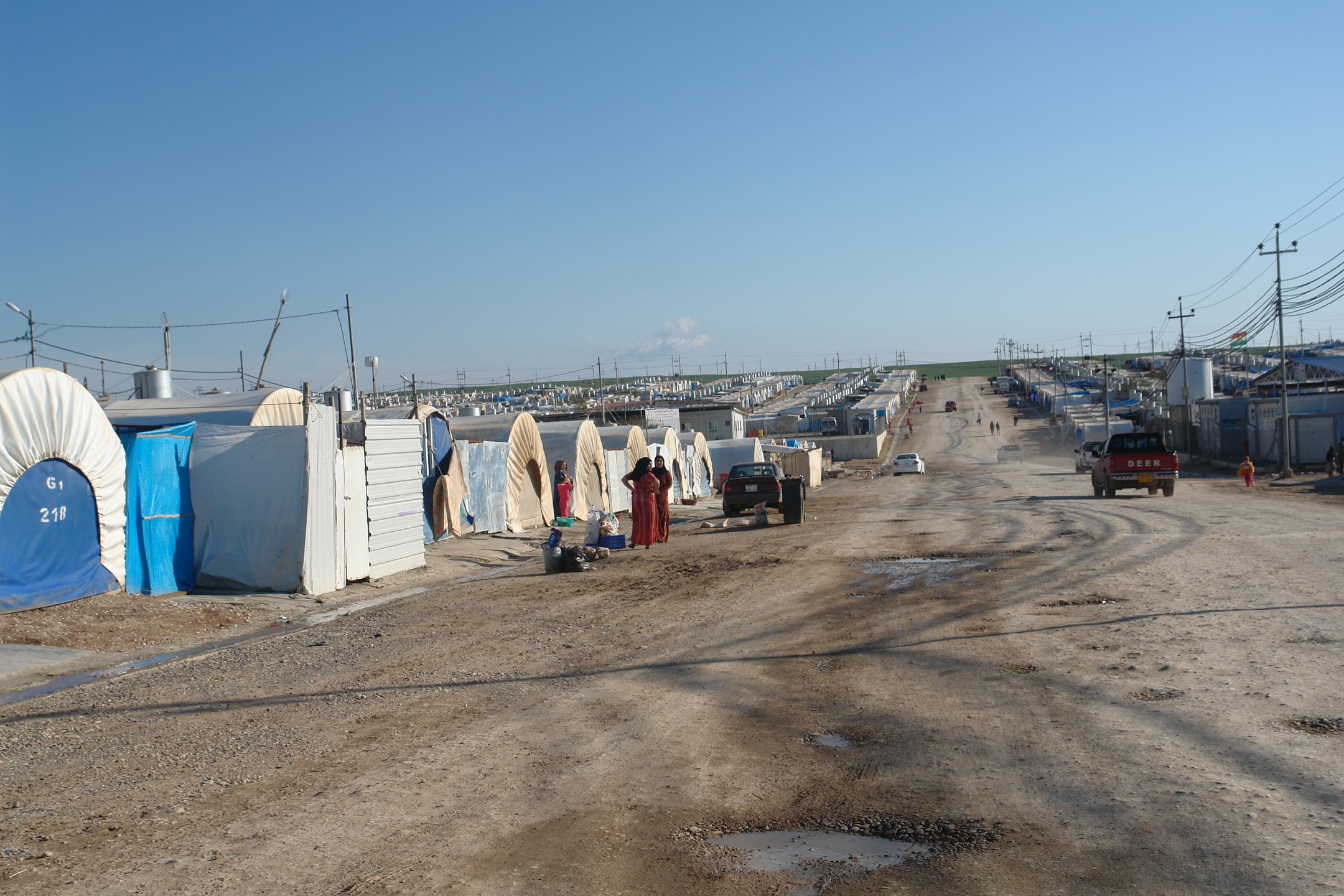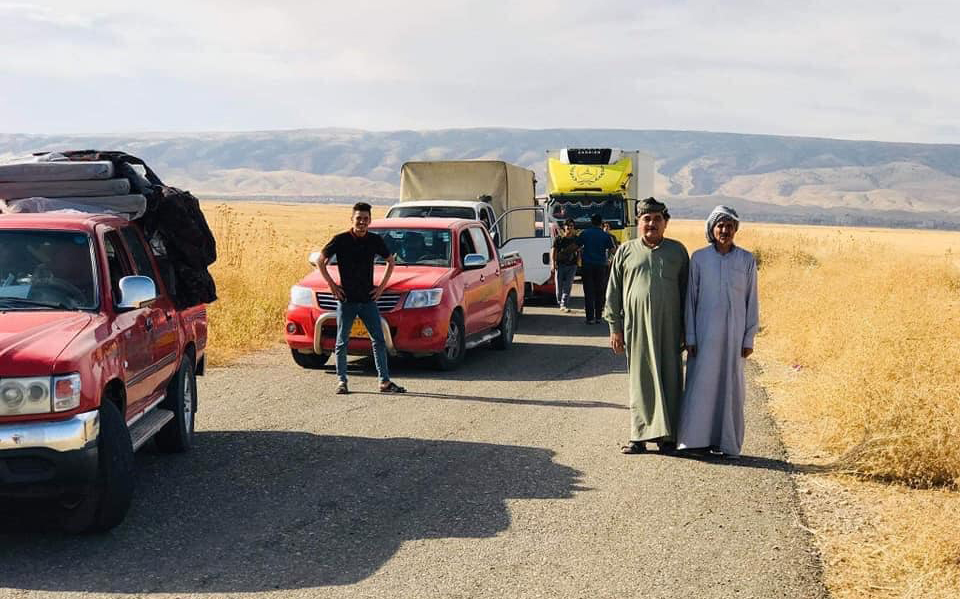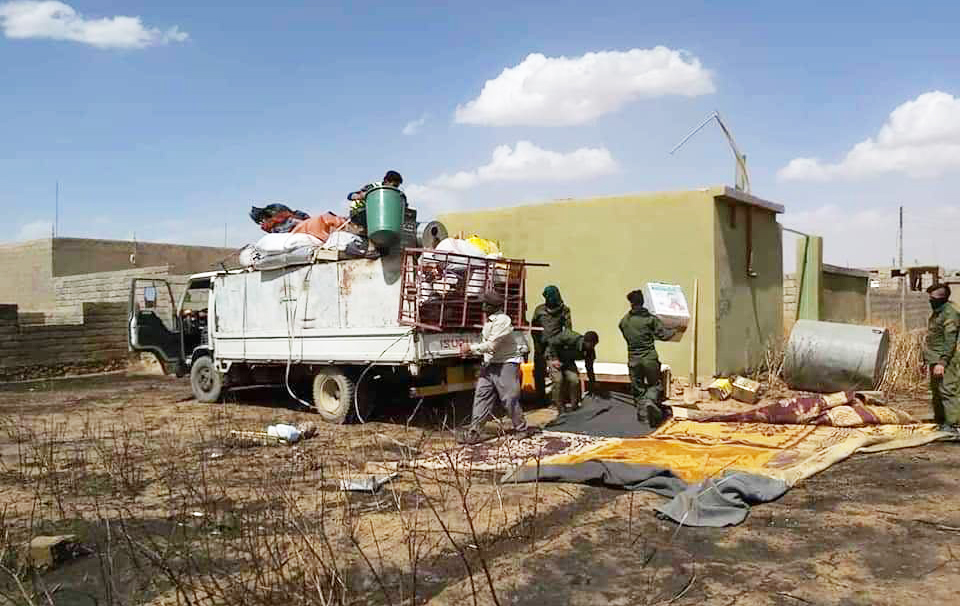“Let’s see if this is the last misery and if we can live in our hometown until we die,” said Suaam Ali, when he was loading furniture into a truck as he was returning to his hometown from a camp.
Ali’s family became displaced in Zakho district, Duhok, when the Islamic State groups (IS) took control of Sinjar district in August 2018. Since then, he had not been able to return to his place of origin, except for occasional visits.
“I decided to return a week ago. After receiving approval from the camp, I rented a truck to move my necessary house furniture to Khanasor,” Ali, 39, said.
Ali’s family left Chamashko camp and moved back to Khanasor in Snoni sub-district, Sinjar, which was their last day of living in displacement.
We hope we won’t face any disaster and misery anymore
Ali explained to KirkukNow that they faced no barriers at any security checkpoints and now they are in front a new life; “We hope we won’t face any disaster and misery anymore.”

Nineveh, trucks are loaded with furniture of displaced Ezidis, who are moving back to Sinjar, 2020. Photo: Exclusive to KrikukNow
The official data of Sinjar local administration reveals that in the last ten days, over 250 families have returned to the district from the Internally Displaced Camps (IDPs) in Duhok.
Khudida Chuki, the commissioner of Snoni sub-district, told KirkukNow that, “250 families have returned to Sinjar in 10 days and more families are coming back to the district.”
250 families have returned to Sinjar in 10 days
Chuki mentioned that some of the families faced “some problems and barriers” when they returned, but they were eventually able to return.
“Names of those who return will be registered to receive aid from the organizations and to attempt to provide them with their necessities,” the commissioner added.
The return of the IDPs happens at a time when traffic restrictions between and within provinces have been eased that was banned for three months due the national coronavirus lockdown, which even tightened the burden on the IDPs shoulders.
“We decided to return for two reasons: we were ensured about the security situation in Sinjar and we were tired of living in displacement,” Saad Mohammed said.
We asked about the security situation and were told that it is handled by the people of Sinjar
Mohammed, who lived in Khanki IDP camp in Duhok for six years, returned to Sinjar three days ago. “We asked about the security situation and were told that it is handled by the people of Sinjar. It was ensuring for us.”

Duhok, Kabartu camp, which is a predominant Ezidi camp, 2019. Photo: Ammar Aziz
The residents of Sinjar, including its sub-district, became displaced six years ago as the district fell under the control of the IS. Although the district was retaken from the IS five years ago, the Ezidis have not been able to return due to security instability and lack of service delivery and reconstructions.
“Thank to go, we again live in our hometown, I hope the other IDPs can return because there are no security issues, there only is lack of service delivery, which is also the case in many other areas,” Mohammed added.
I hope the other IDPs can return
He also explained the because the road between Sinjar and Shila is closed, the IDPs use Nineveh and Tal Afar road to move back to Sinjar, which is a longer road.
Ezidis compose 30 percent of over 787 thousand IDPs who still live in the Kurdistan Region, according to the Joint Crisis Coordination Center, the Kurdistan Regional Government (KRG).
Askander Mohammed, head of the office of the Iraq Ministry of Displacement and Migration in Duhok, told KirkukNow that, “any IDP family who wants to return brings a formal request from the local administration in Sinjar, and later they will be allowed to leave the camp… the letter will allow them to enter the checkpoints because otherwise they will be forced to move back to the camp.”
Any IDP family who wants to return brings a formal request from the local administration in Sinjar
According to the instructions of the ministry, the families have to receive the license from the commissioner of Sinjar, Mahma Khalid, who is based in Duhok due to administrative disputes with the other two administrations based in Sinjar.
Askanadar Mohammed insisted that the IDPs were not under pressure to return to Sinjar, “all of them returned per their preference and we will follow up the problems they may face, especially at the checkpoints.”

Sinjar, two man gladly take a picture while returning to their hometown, 2020. Photo: Exclusive to KirkukNow
The Iraqi government has planned to shut down majority of the IDP camps and provides IDP families with a million and 500 thousand Iraqi dinars [1,200 dollars] to speed up the return of the IDPs.
The Ezidi minority were brutally attacked and their children and women were enslaved by the IS militants in August 2014, when their town, Sinjar, 120 km western Mosul, fell under the control of the IS groups. The district was retaken from the IS in 2015.





